Ever went from one side of the Earth to the other? Our planet is truly big among the celestial objects in our Solar System, so you could be forgiven if you think that a train ride, plane ride, or anything else takes too long.
But just how big is the Earth? The Earth has a radius of 2.439 kilometers / 1.516 miles and a diameter of only 12.742 km / 7.917 mi. When it comes to weight, the mass of Earth is equivalent to 5.9 quadrillion kg.

In the Solar System, our Earth is the fifth largest planet and the largest of the terrestrial planets. You might have heard many talks about colonizing Mars; well, Mars is almost two times smaller than Earth. Its diameter is slightly more than half that of Earth’s. So how do the other planets compare to our Earth? Let’s find out!
Earth and Solar System Size Comparison
Earth vs Mercury
Mercury is the smallest terrestrial planet, and overall the smallest planet in our Solar System. It has a diameter of only 4.879 km / 3.032 mi and a radius of 2.439 km / 1.516 mi and only 0.055 Earth masses.
![]()
Our Earth is three times bigger than Mercury. Mercury doesn’t have any moon, while Earth has only one, and several other very small temporary satellites trapped in its orbit.
Earth vs Venus
Venus is the sixth-largest planet from the Sun. It has a diameter of 12.104 km / 7.521 mi and a radius of around 6.051 km / 3.760 mi. The mass of Venus is equivalent to 0.9 Earth masses, or 90% of our Earth’s mass.
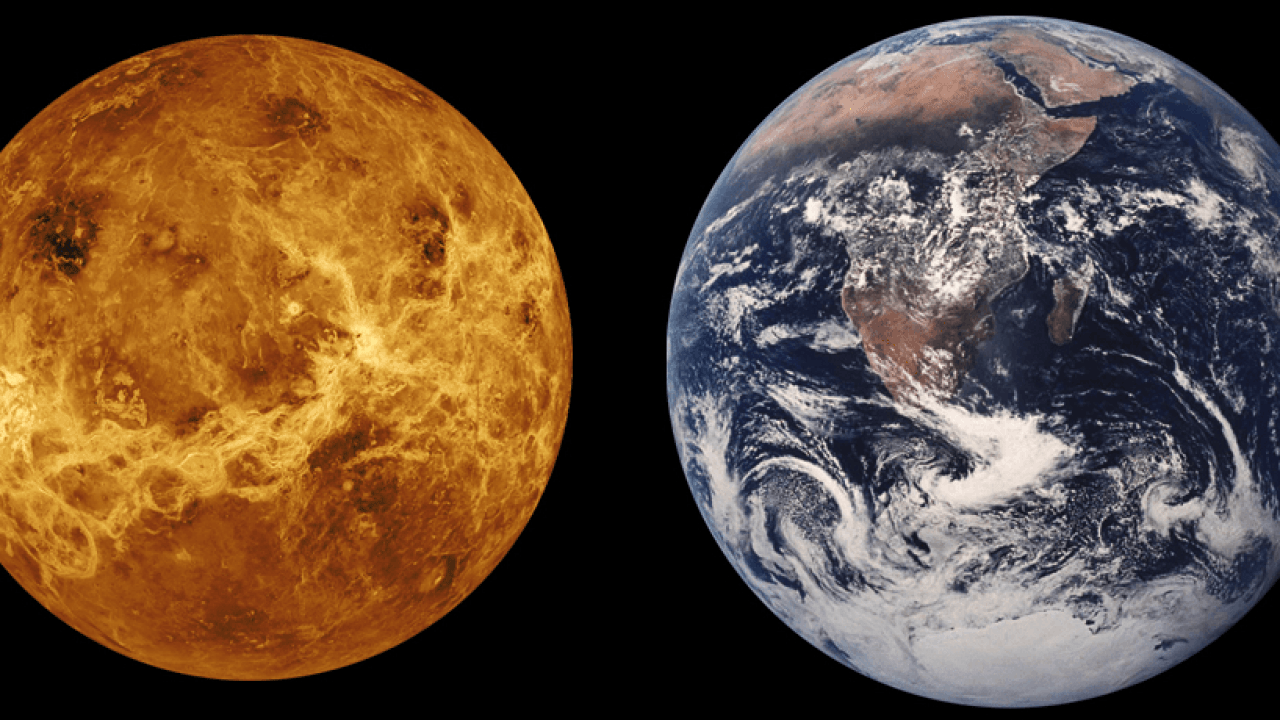
Venus is also three times bigger than Mercury, and it is the second-largest terrestrial planet after our Earth. It is just slightly smaller than our Earth, and it doesn’t have a moon. Venus is considerably hotter than our Earth, though, and it is actually the hottest planet in the Solar System, with surface average temperatures recorded at 900o F / 465o C.
Since the average temperatures on Earth are around 14oC, this means that Venus is 33.2 times hotter than Earth. But if we were to compare the hottest temperatures ever recorded on Earth, which was 70.7oC, which was taken in the Lut Desert of Iran, then the surface temperatures on Venus would still be around 6.5 times greater.
Earth vs Mars
The most populated planet when it comes to robots, Mars, is Earth’s red twin in many aspects; however, in terms of size, things start to change.
Mars is the second-smallest planet in the Solar System, having a diameter of only 6.779 km / 4.212 mi (30% bigger than Mercury), and a radius of 3.389 km / 2.105 mi. The Red Planet has two moons, Phobos and Deimos, though they are extremely small.
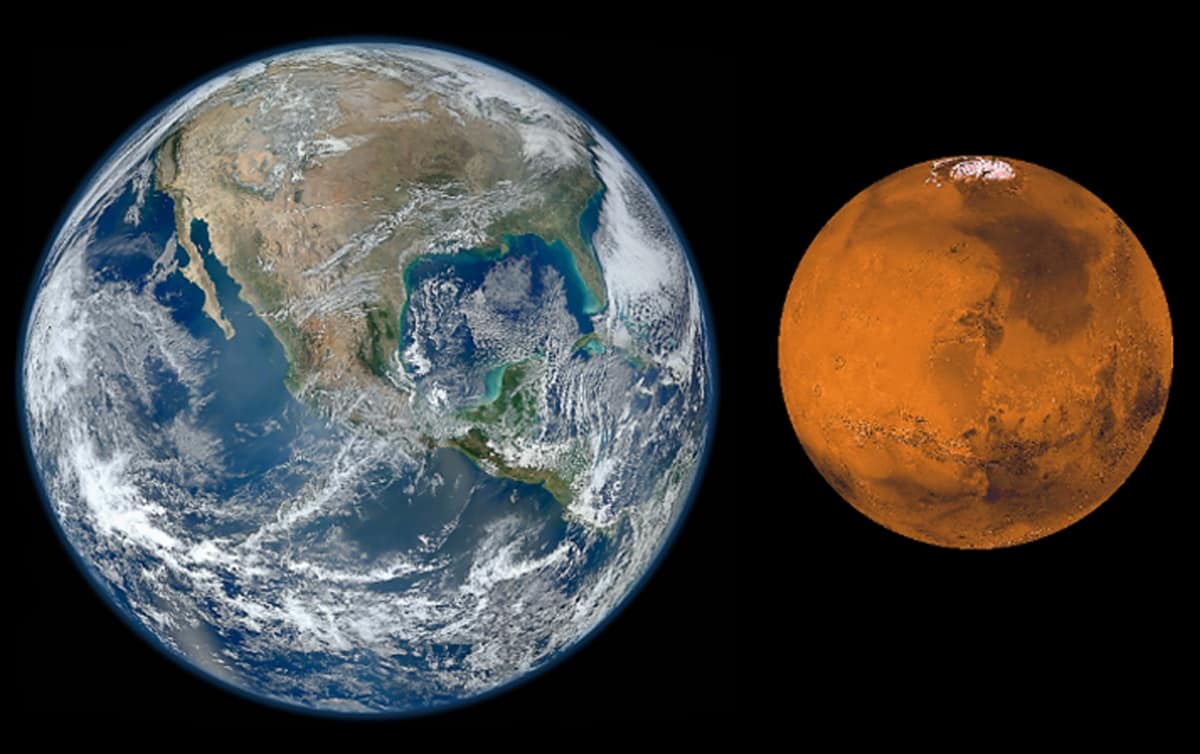
Mars has only 11% of our Earth’s mass or 0.11 Earth masses. Earth is basically almost two times bigger than the Red Planet, and it still has more robots, duh!
Earth vs Saturn
Saturn, which is the second-largest planet in our Solar System, is a monster in comparison to Earth. Saturn has a diameter of approximately 120.536 km / 74.897 mi and a radius of around 58.232 km / 36.183 mi. It is quite massive as well, having the equivalent of 95.16 Earth masses.
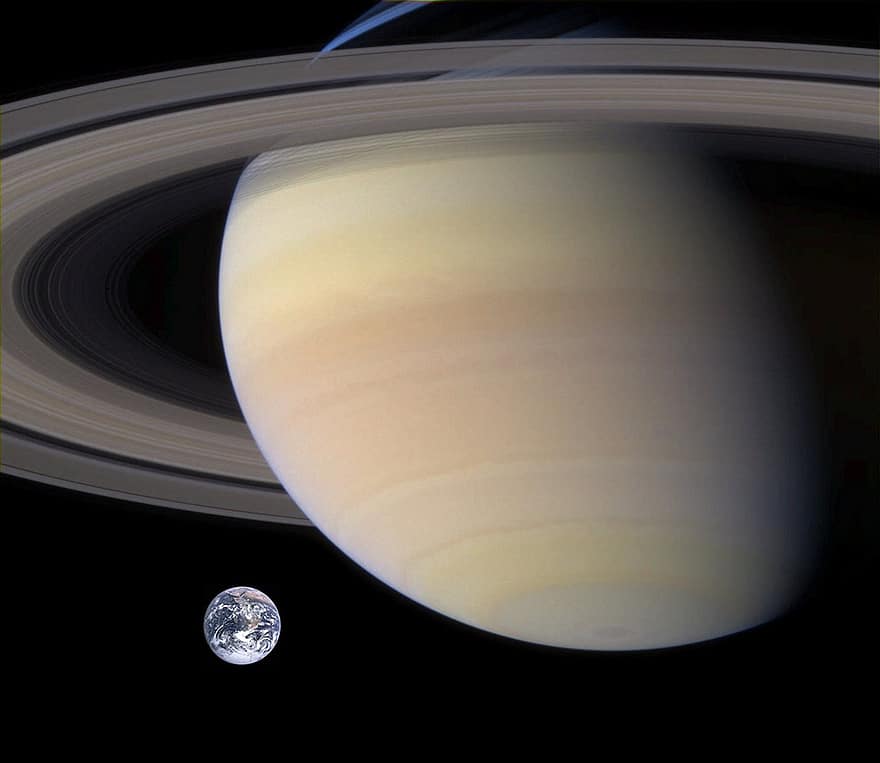
Saturn’s diameter is 9.5 times bigger than our Earth’s, and if the gas giant were hollow, you could fill it with more than 764 Earth-sized planets. When it comes to moons, Saturn is the King of the Moons, having 82 confirmed orbiting around it, and more await to be discovered.
Earth vs Jupiter
The true giant in our Solar System, namely the planet Jupiter, has a diameter of around 142.984 km / 88.846 mi at the equator, and a diameter of about 133.708 km / 83.082 mi at the poles.
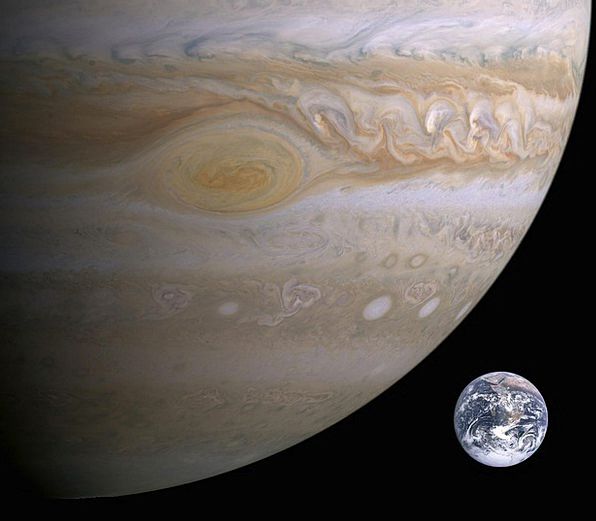
It has a mean radius of 69.911 km / 43.440 mi, and its mass is equivalent to 318 Earth masses. You could fit 1.300 Earths inside Jupiter. Jupiter has more than 11 times the diameter of Earth. It is the biggest planet in the Solar System.
Earth vs Uranus
The icy giants, Uranus and Neptune, are a bit similar in size and mass; however, they are both several times bigger than our Earth. Uranus is the third-largest planet in the Solar System, and it has a diameter of around 51.118 km / 31.763 mi and a radius of 25.362 km / 15.759 mi.
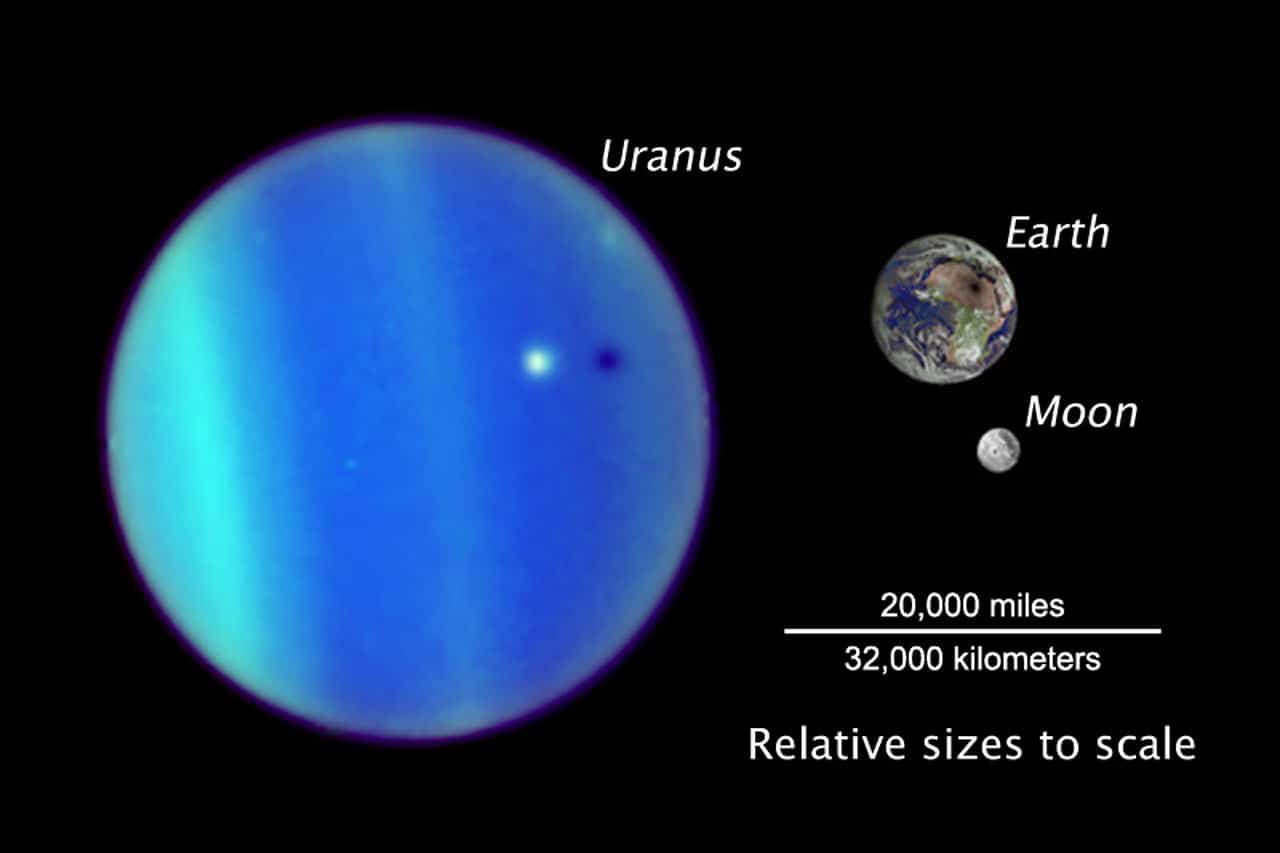
Uranus is reasonably massive, with its mass being equivalent to 14.54 Earth masses. It would take around 63 Earth-sized planets to fill Uranus, and yes, that sounds dirty. Uranus is four times wider than Earth, wait, that sounds even dirtier, well… moving on to Neptune.
Earth vs Neptune
Neptune is the fourth-largest planet in the Solar System. Neptune has a diameter of 49.244 km / 30.598 mi, and a radius of 24.764 km / 15.387 mi. The mass of Neptun is equivalent to 17.15 Earth masses, and it would take around four Earth-sized planets to fill Neptune.
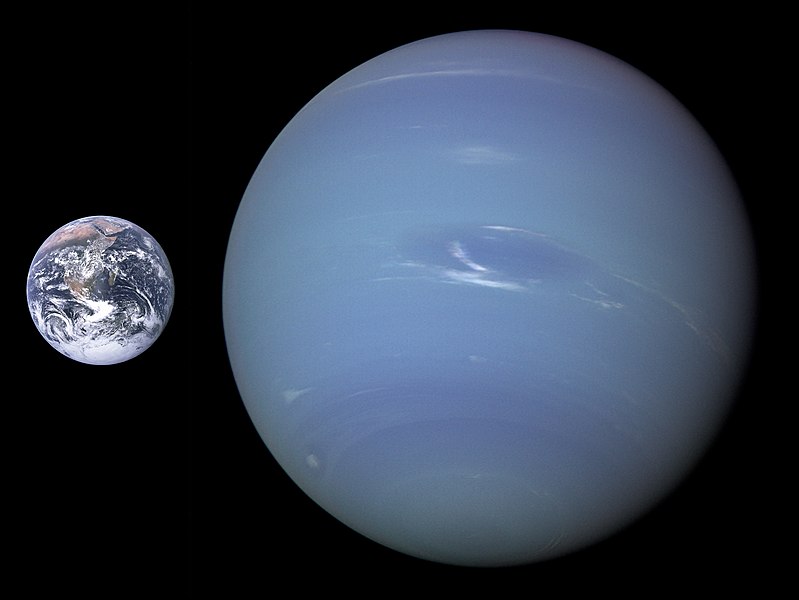
The diameter of Neptune is four times wider than the diameter of the Earth. Now that we’re done with the planets, let’s check how the Earth fares against other celestial objects.
Earth vs Pluto
Pluto is the ninth-largest planet in the Solar System, and though many don’t regard it as a planet anymore, it is large enough to deserve a size-comparison.
Pluto has a diameter of around 2.376 km / 1.476 mi and a radius of around 1,188 km / 738 mi. It’s not quite a massive planet, since it has only 0.01 Earth masses or just 1% of our Earth’s mass.
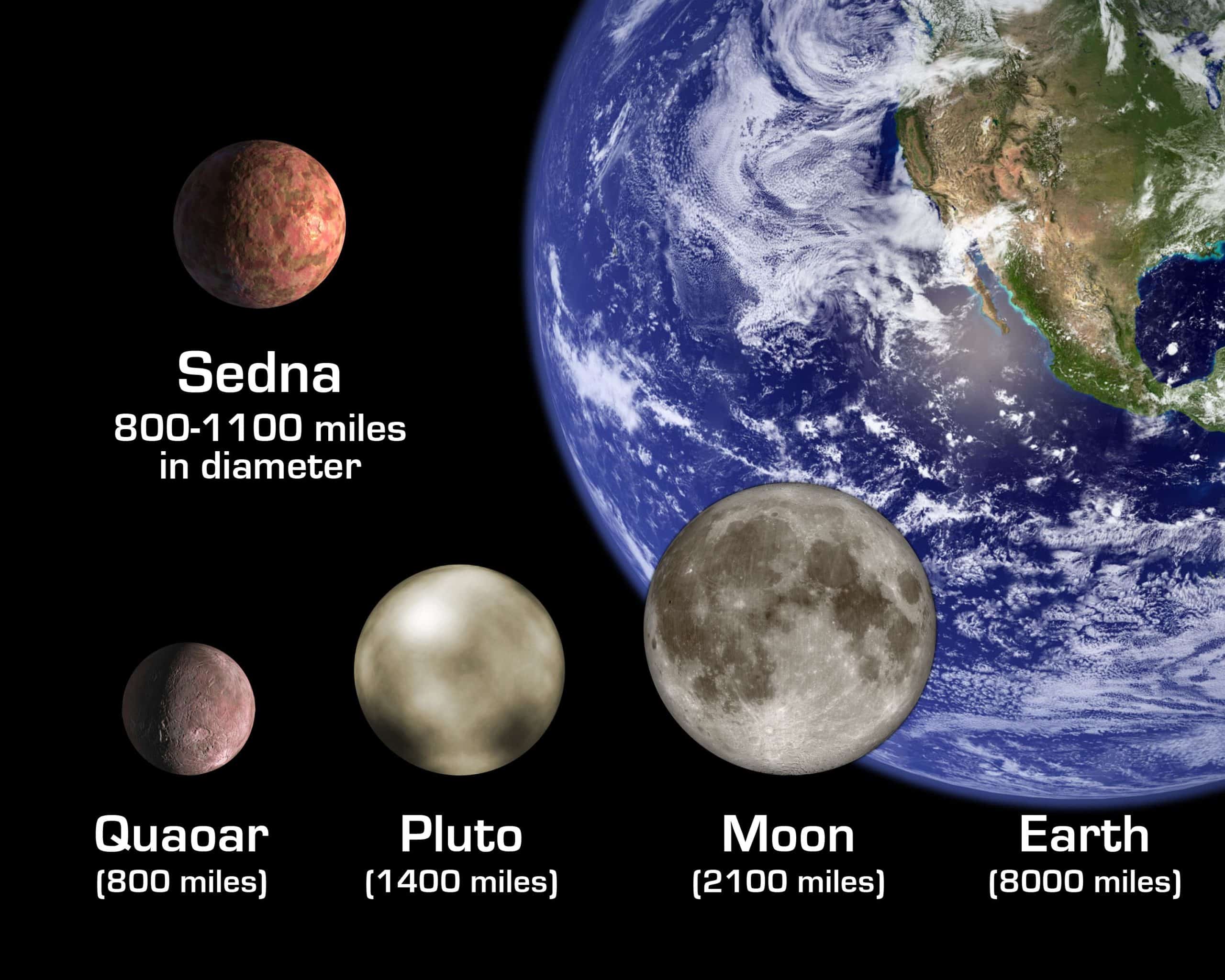
Pluto has only 18.5% of our Earth’s diameter, and, like Earth, it also has a moon, which is large relative to itself, namely, Charon. Charon has 9.5% of our Earth’s diameter, and since we’ve compared Pluto’s moon to our Earth, let’s see how our Moon fares in comparison to Earth.
Earth vs Moon
Earth’s Moon has a diameter of around 3.474 km / 2.158 mi and a radius of 1.737 km / 1.079 mi. In comparison to Earth, the Moon has only 1.2% of Earth’s mass, or in another way of looking at it, the Earth is 81 times heavier than the Moon.
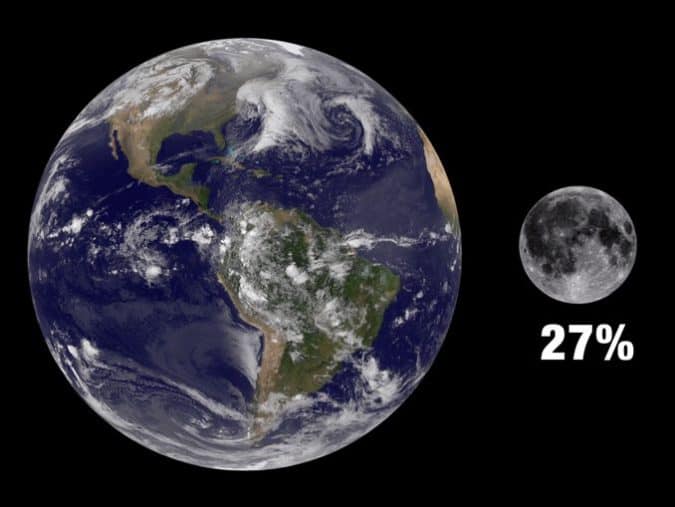
The Moon is about one quarter the size of Earth, and it would take around 50 moons to fill the Earth. Our Moon is, though, the largest moon in the Solar System relative to its parent planet.
Did you know?
- Our Earth is both gaining and losing mass due to the accretion of infalling material. This includes celestial objects such as micrometeorites and cosmic dust, while the loss of hydrogen and helium gas is also influencing our Earth’s size.
- If all of Earth’s crustal surface were at the same elevation, the depth of the resulting ocean would only be at around 2.7 km / 1.68 mi. Now that wouldn’t be fun for fish.
- The average salinity of Earth’s oceans is about 35 grams of salt per kilogram of seawater – 3.5% salt.
- The continents of Earth move at the same rate as human fingernails grow, and over the course of thousands of years, the continents sometimes mold together.
- The Sun has a diameter, which is 109 times greater than that of Earth. It weighs 330,000 times more than our Earth, and it would take around 1.3 million Earth’s to fill the Sun.
Sources:
Image Sources:
- https://images-wixmp-ed30a86b8c4ca887773594c2.wixmp.com/f/81d93305-4ac2-4eab-b5a8-6dd1125156b3/ddytpe7-bac26b9c-8dc0-4648-8ef3-3646c4ed3923.png/v1/fill/w_1595,h_501,strp/realistic_solar_system_size_comparison__labeled__by_jordanli04_ddytpe7-pre.png?token=eyJ0eXAiOiJKV1QiLCJhbGciOiJIUzI1NiJ9.eyJzdWIiOiJ1cm46YXBwOiIsImlzcyI6InVybjphcHA6Iiwib2JqIjpbW3siaGVpZ2h0IjoiPD0zMTQ4IiwicGF0aCI6IlwvZlwvODFkOTMzMDUtNGFjMi00ZWFiLWI1YTgtNmRkMTEyNTE1NmIzXC9kZHl0cGU3LWJhYzI2YjljLThkYzAtNDY0OC04ZWYzLTM2NDZjNGVkMzkyMy5wbmciLCJ3aWR0aCI6Ijw9MTAwMTQifV1dLCJhdWQiOlsidXJuOnNlcnZpY2U6aW1hZ2Uub3BlcmF0aW9ucyJdfQ.XaBP7nKt0ODbXbetxWQbv4xxlvwTu0LAmpM079h261E
- https://res.cloudinary.com/dk-find-out/image/upload/q_80,w_640,f_auto/mercury-Size-icon_krpmx6.png
- https://www.universetoday.com/wp-content/uploads/2008/12/venus_earth_comparison-1280×720.png
- https://suindependent.com/wp-content/uploads/2019/11/Life-on-Earth-and-Mars.jpg
- https://p0.pikist.com/photos/184/394/saturn-planet-earth-size-comparison-ring-space-space-travel-solar-system.jpg
- https://media.pixcove.com/G/3/8/Jupiter-Earth-Planet-Size-Comparison-Free-Image-Bi-3633.jpg
- https://cdn.spacetelescope.org/archives/images/screen/opo0642e.jpg
- https://upload.wikimedia.org/wikipedia/commons/thumb/7/78/Neptune%2C_Earth_size_comparison_2b.jpg/799px-Neptune%2C_Earth_size_comparison_2b.jpg
- https://photojournal.jpl.nasa.gov/jpeg/PIA05567.jpg
- https://earthhow.com/wp-content/uploads/2019/08/How-Big-Is-the-Moon-Feature-675×507.jpg
